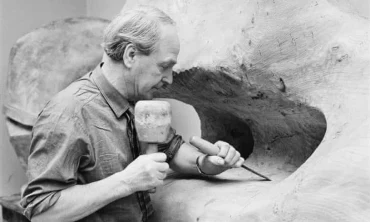
- 357 Lê Hồng Phong, P.2, Q.10, TP.HCM
- Hotline 1: 1900 7060
Hotline 2: (028) 3622 8849
Bài tập IELTS Reading: A Remarkable Beetle - Phân tích từ vựng
Diễn đàn tiếp tục mang đến cho các bài một bài tập Reading với dạng bài Yes, No, Not Given và phân tích các từ vựng mới nhé.
A Remarkable Beetle
Some of the most remarkable beetles are the dung beetles, which spend almost their whole lives eating and breeding in dung’.
More than 4,000 species of these remarkable creatures have evolved and adapted to the world’s different climates and the dung of its many animals. Australia’s native dung beetles are scrub and woodland dwellers, specialising in coarse marsupial droppings and avoiding the soft cattle dung in which bush flies and buffalo flies breed.
In the early 1960s George Bornemissza, then a scientist at the Australian Government’s premier research organisation, the Commonwealth Scientific and Industrial Research Organisation (CSIRO), suggested that dung beetles should be introduced to Australia to control dung-breeding flies. Between 1968 and 1982, the CSIRO imported insects from about 50 different species of dung beetle, from Asia, Europe and Africa, aiming to match them to different climatic zones in Australia. Of the 26 species that are known to have become successfully integrated into the local environment, only one, an African species released in northern Australia, has reached its natural boundary.
Introducing dung beetles into a pasture is a simple process: approximately 1,500 beetles are released; a handful at a time, into fresh cow pats 2 in the cow pasture. The beetles immediately disappear beneath the pats digging and tunnelling and, if they successfully adapt to their new environment, soon become a permanent, self-sustaining part of the local ecology. In time they multiply and within three or four years the benefits to the pasture are obvious.
Dung beetles work from the inside of the pat so they are sheltered from predators such as birds and foxes. Most species burrow into the soil and bury dung in tunnels directly underneath the pats, which are hollowed out from within. Some large species originating from France excavate tunnels to a depth of approximately 30 cm below the dung pat. These beetles make sausage-shaped brood chambers along the tunnels. The shallowest tunnels belong to a much smaller Spanish species that buries dung in chambers that hang like fruit from the branches of a pear tree. South African beetles dig narrow tunnels of approximately 20 cm below the surface of the pat. Some surface-dwelling beetles, including a South African species, cut perfectly-shaped balls from the pat, which are rolled away and attached to the bases of plants.
For maximum dung burial in spring, summer and autumn, farmers require a variety of species with overlapping periods of activity. In the cooler environments of the state of Victoria, the large French species (2.5 cms long) is matched with smaller (half this size), temperate-climate Spanish species. The former are slow to recover from the winter cold and produce only one or two generations of offspring from late spring until autumn. The latter, which multiplies rapidly in early spring, produce two to five generations annually. The South African ball-rolling species, being a subtropical beetle, prefers the climate of northern and coastal New South Wales where it commonly works with the South African tunnelling species. In warmer climates, many species are active for longer periods of the year.
Dung beetles were initially introduced in the late 1960s with a view to controlling buffalo flies by removing the dung within a day or two and so preventing flies from breeding. However, other benefits have become evident. Once the beetle larvae have finished pupation, the residue is a first-rate source of fertiliser. The tunnels abandoned by the beetles provide excellent aeration and water channels for root systems. In addition, when the new generation of beetles has left the nest the abandoned burrows are an attractive habitat for soil-enriching earthworms. The digested dung in these burrows is an excellent food supply for the earthworms, which decompose it further to provide essential soil nutrients. If it were not for the dung beetle, chemical fertiliser and dung would be washed by rain into streams and rivers before it could be absorbed into the hard earth, polluting water courses and causing blooms of blue-green algae. Without the beetles to dispose of the dung, cow pats would litter pastures making grass inedible to cattle and depriving the soil of sunlight. Australia’s 30 million cattle each produce 10-12 cow pats a day. This amounts to 1.7 billion tonnes a year, enough to smother about 110,000 sq km of pasture, half the area of Victoria.
Dung beetles have become an integral part of the successful management of dairy farms in Australia over the past few decades. A number of species are available from the CSIRO or through a small number of private breeders, most of whom were entomologists with the CSIRO’s dung beetle unit who have taken their specialised knowledge of the insect and opened small businesses in direct competition with their former employer.
Questions 1-5
Do the following statements reflect the claims of the writer in Reading Passage 6? In boxes 1-5 on your answer sheet write:
YES if the statement reflects the claims of the writer
NO if the statement contradicts the claims of the writer
NOT GIVEN if it is impossible to say what the writer thinks about this
1. Bush flies are easier to control than buffalo flies.
2. Four thousand species of dung beetle were initially brought to Australia by the CSIRO.
3. Dung beetles were brought to Australia by the CSIRO over a fourteen-year period.
4. At least twenty-six of the introduced species have become established in Australia.
5. The dung beetles cause an immediate improvement to the quality of a cow pasture.
ANSWER KEY
1. Not given
2. No
3. Yes
4. Yes
5. No
TỪ VỰNG TRONG BÀI
Dung beetle: bọ hung
Dung: phân hoặc chất thải của động vật (the droppings or excreta of animals)
Specialising in coarse marsupial droppings: chuyên ăn phân thô của động vật có túi
Bush flies: ruồi bụi
Buffalo flies: ruồi trâu
Pasture /ˈpæs.tʃɚ/ (n): đồng cỏ (grass or similar plants suitable for animals such as cows and sheep to eat, or an area of land covered in this)
Local ecology: sinh thái địa phương
Hollow out: tạo không gian trống, làm rỗng (to make an empty space inside something)
Excavate /ˈek.skə.veɪt/ (v): khai quật (to dig a hole or channel in the ground, especially with a machine)
Larva /ˈlɑːr.və/ (n): ấu trùng (a form of an insect or an animal such as a frog that has left its egg but has not yet developed into a pupa or adult insect or animal)
Aeration /erˈeɪ.ʃən/ (n): hệ thống không khí (a process that allows air to act on something)
Decompose /ˌdiː.kəmˈpoʊz/ (v): phân hủy (to decay, or to cause something to decay)
Dairy farm: trang trại bò sữa
Nguồn: IELTS Mentor
THƯ VIỆN LIÊN QUAN

Reading là một trong bốn phần thi bắt buộc của bài thi IELTS, đây cũng được xem là phần thi thử thách nhất để chinh phục được band điểm cao. Hãy...

Bài viết cung cấp cho đọc giả Bài tập Reading part 3 - Chủ đề: Why fairy tales are really scary tales - Có đáp án

Bài viết cung cấp cho đọc giả Bài tập Reading part 2 - Chủ đề: The Desolenator: producing clean water - Có đáp án

Bài viết cung cấp cho đọc giả Bài tập Reading part 1 - Chủ đề: Henry Moore (1898-1986) - Có đáp án
Hoặc gọi ngay cho chúng tôi:
1900 7060
 | Chính sách bảo mật thông tin | Hình thức thanh toán | Quy định chung
| Chính sách bảo mật thông tin | Hình thức thanh toán | Quy định chung
Giấy chứng nhận đăng ký doanh nghiệp số 0310635296 do Sở Kế hoạch và Đầu tư TPHCM cấp.
Giấy Phép hoạt động trung tâm ngoại ngữ số 3068/QĐ-GDĐT-TC do Sở Giáo Dục và Đào Tạo TPHCM cấp